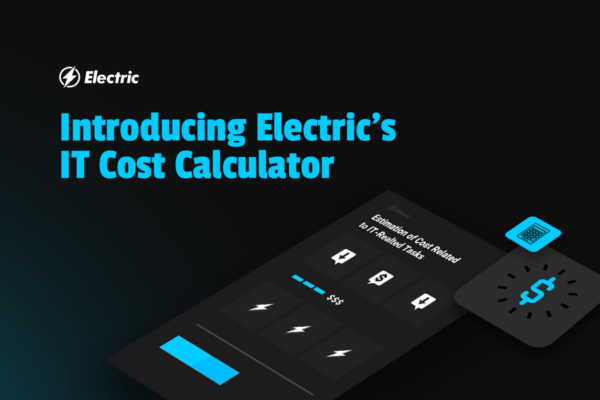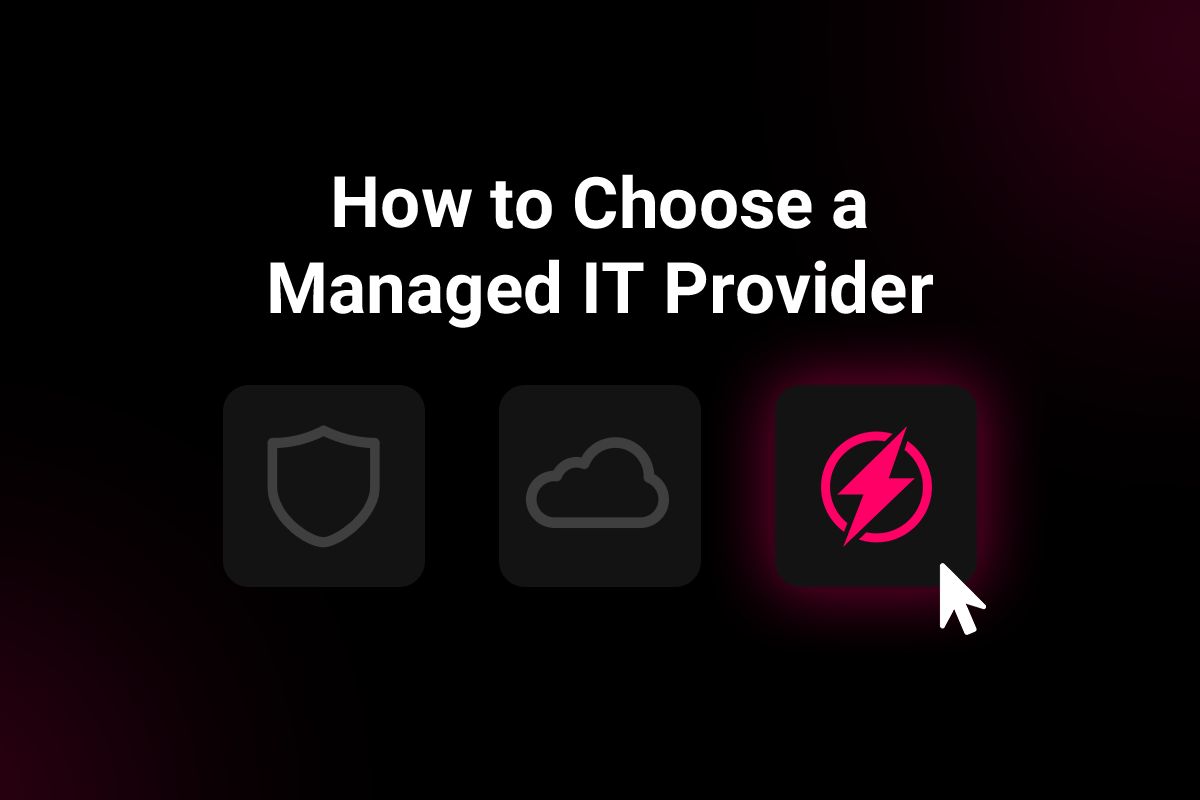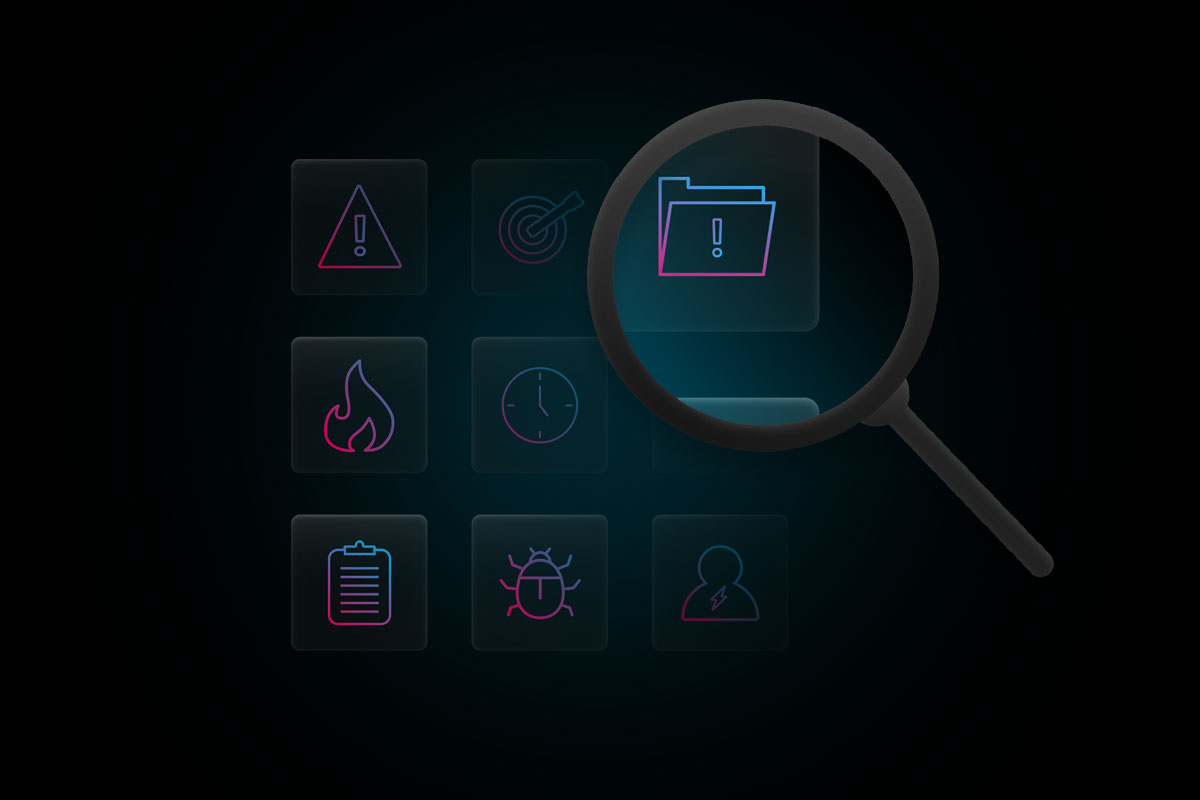
As your business scales, it becomes increasingly difficult to manage your entire IT infrastructure in-house. Partnering with a managed IT provider eases the demands on your internal team and helps to position your organization for its next phase of growth. But with so many options to choose from when it comes to outsourced IT, how do you know which approach is right for your needs? In this article, we’ll share the questions you should ask a prospective managed IT provider to find the best fit for your business.
What is a Managed IT Provider?
A managed IT provider is an outsourced partner that assumes responsibility for a business’s IT needs. Managed IT providers offer a comprehensive suite of services that help small to medium-sized businesses keep their technology running smoothly. These services can include real-time IT support, cybersecurity, mobile device management, employee onboarding, and much more.
Managed IT services allow businesses to outsource non-core operations to a third party in order to save money, enhance service quality, and free up in-house resources to focus on more strategic initiatives.
5 Benefits of Choosing a Managed IT Provider
Ensuring your IT infrastructure is up to date, compliant, and secure can be a full-time job, which is why a managed IT provider offers so many advantages for small businesses. Some of the benefits you can expect include:
1. Cost Savings
A Managed IT provider can help you find more efficient and cost-effective solutions for your IT needs, and pass on software discounts through their industry partnerships.
2. Access to Expert Knowledge
Managed IT providers have a wealth of knowledge and experience that your business can leverage in a number of ways, from choosing the right IT software to troubleshooting technical problems.
3. Improved Productivity
When your IT infrastructure is up to date and always running smoothly, employees become more productive. Proactive IT management means less downtime for your business.
4. Compliance
Managed IT providers can ensure your IT practices are compliant with industry regulations. This is especially important for businesses in heavily regulated industries, such as healthcare and finance.
5. Better Security
Managed IT providers can help you implement enhanced security solutions that protect your sensitive data and other valuable assets from cyber attacks.

Post-Data Breach: Navigating a Response Plan
In the event that your critical data, documents, or customer information are exposed, is your business prepared to respond?
Watch the Webinar8 Questions to Ask When Choosing a Managed IT Provider
While the benefits of a managed IT provider are many, not all providers are created equal. It’s important to research the details of the services on offer to ensure your chosen provider can meet your business needs. Before you sign on the dotted line, here are some important questions to ask a prospective managed IT provider:
1. How fast is your support response time?
When it comes to managed IT, you need a provider that can deliver support in a timely manner. No one wants to be left waiting for hours, or even days, for a response to their IT issue. Ask for the provider’s average response time so you can be confident you’ll receive prompt, efficient support when you need it. Electric, for example, promises an initial response time of 10 minutes or less.
2. How can you strengthen my cybersecurity?
Your business is only as strong as your cybersecurity. Data breaches are becoming more and more common, and the consequences of a cyber attack can be devastating. Make sure to ask your prospective managed IT provider how they approach cybersecurity. Find out what services they offer, which solutions they use, and what their experience is. Don’t forget to ask about provisions for disaster recovery and business continuity in the event of an attack.
3. Do you take care of Mobile Device Management?
With more and more employees accessing your network from outside the office, you need guarantees that your mobile devices are managed properly. Otherwise, you could be opening yourself up to security risks. Ask your prospective managed IT provider if they offer mobile device management services, which devices they support, and what their capabilities are. This way, you can be sure your devices are up to date and secure, no matter where your employees work.
4. Can you automate employee onboarding?
The technical tasks associated with onboarding a new employee can be surprisingly time-consuming, especially as your team expands. With automated employee onboarding, your new hires have everything they need to get up and running, from device provisioning to cloud account setup and access management. Find out how your managed IT provider can lighten the workload of your HR team and streamline the new employee experience.
5. What IT tasks can you take off my hands?
As a busy business owner or executive, your time is too valuable to be spent resolving day-to-day IT issues. A good managed IT provider can take technology-related administration off your hands (and the hands of your employees), freeing you up to focus on other aspects of your business. When assessing different managed IT providers, be sure to share your current pain points and ask them what everyday IT tasks they can take responsibility for.
6. Who are your technology partners?
It’s important to ask a prospective managed IT provider who their technology partners are to ensure they are well-acquainted with the software and services you need. If a provider can easily integrate with the tech stack you already have, you’re more likely to experience a smooth transition and quick employee uptake. A comprehensive network of technology partners also indicates your provider can make informed recommendations for new software, and deploy new SaaS apps as needed.
7. What visibility will I have of my IT?
Even when day-to-day management is handed over to an external provider, it’s important that your business retains the ability to instantly view the overall health of your IT environment. Ask to see the dashboard you’ll have access to and check that you can view the status of your devices, networks, people, applications, and support. Tracking these updates in one place gives you peace of mind that everything is being handled.
8. What is your cost structure, and what savings can I expect?
When you’re looking at managed IT providers, ask for a full breakdown of their cost structure, and read through our article on IT support costs to get an idea of how much it should cost. Some managed IT providers have complex charging systems that lead to unexpected add-ons each month, so make sure you have a clear understanding of what your monthly bill will be. Don’t be afraid to ask about expected savings, either. Your managed IT provider should be able to demonstrate how their services deliver greater cost efficiencies than in-house IT.

How much is IT truly costing your business?
Use Electric’s free IT cost calculator to find out today.
Calculate Your IT SpendChoose a Managed IT Provider You Can Rely On
Whether you’re considering outsourced IT for the first time, or you’ve outgrown your current managed service provider, we can help. With Electric, all of your IT is managed in one place. As well as a single platform to manage your people, devices, networks, and applications, your team also gets access to over 200 IT technicians to solve their day-to-day IT requests. Contact us today to learn more.



